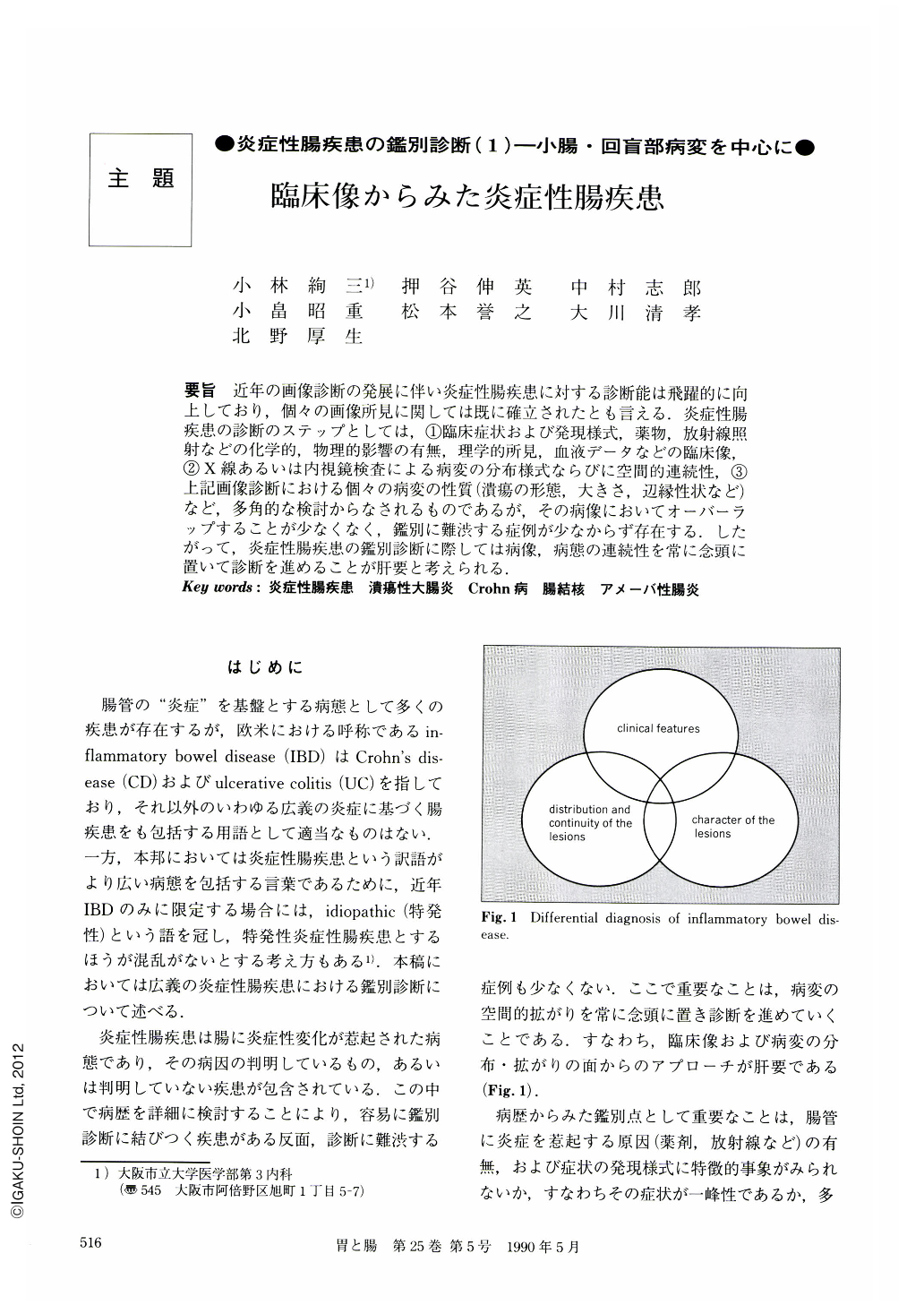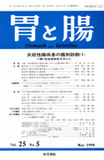Japanese
English
- 有料閲覧
- Abstract 文献概要
- 1ページ目 Look Inside
要旨 近年の画像診断の発展に伴い炎症性腸疾患に対する診断能は飛躍的に向上しており,個々の画像所見に関しては既に確立されたとも言える.炎症性腸疾患の診断のステップとしては,①臨床症状および発現様式,薬物,放射線照射などの化学的,物理的影響の有無,理学的所見,血液データなどの臨床像,②X線あるいは内視鏡検査による病変の分布様式ならびに空間的連続性,③上記画像診断における個々の病変の性質(潰瘍の形態,大きさ,辺縁性状など)など,多角的な検討からなされるものであるが,その病像においてオーバーラップすることが少なくなく,鑑別に難渋する症例が少なからず存在する.したがって,炎症性腸疾患の鑑別診断に際しては病像,病態の連続性を常に念頭に置いて診断を進めることが肝要と考えられる.
Reliability of diagnosis of inflammatory bowel disease (IBD) has become much better because of the improvements of radiologic and fiberscopic procedures. Differential diagnosis of IBD is based upon 1) clinical features such as symptoms, onset, chemical or radiological exposure, physical signs, laboratory data, 2) distribution and continuity of the lesions determined by radiologic or fiberscopic examination, 3) characteristics of each finding shown by radiologic or fiberscopic examination, e.g., size and shape of the ulcers, mucosal condition, marginal changes. Relying on these data, differentiation of IBD seems to be rather easy in most cases, though there are overlapping cases which cause difficulty in differentiation. Thus, clinical and pathogenetic sequence of IBD should be taken into account in the process of differential diagnosis in IBD.

Copyright © 1990, Igaku-Shoin Ltd. All rights reserved.


